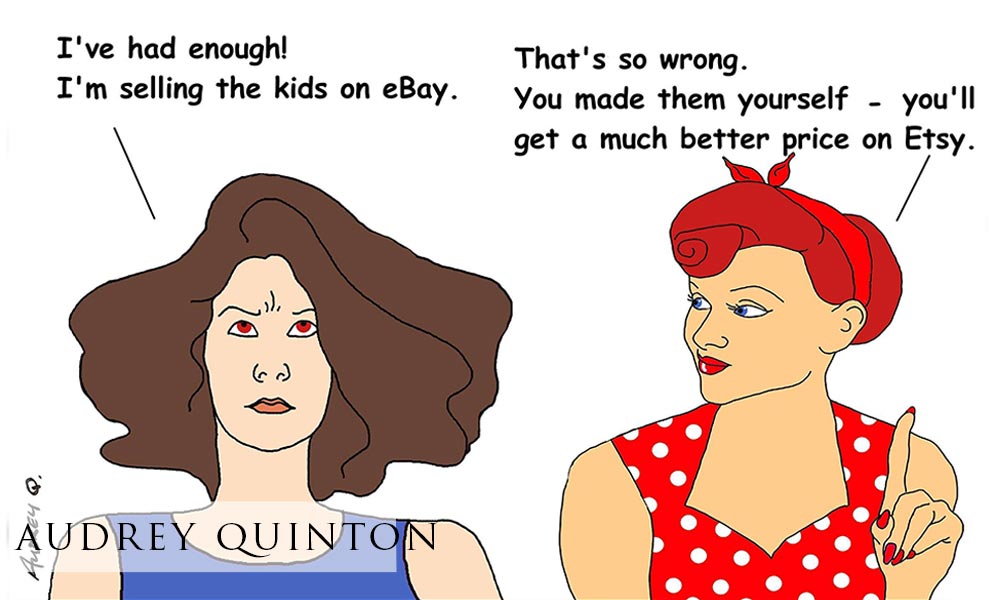My experience so far of the Digital Illustration Diploma Course:
If you are reading this post because you are considering taking the Digital Illustration Diploma course, then let me first say that I can thoroughly recommend it. The course content is fascinating and well structured. The tutor, Monique Bailey, has been unfailingly helpful and enthusiastic. I found the course stretched me quite as much as I thought it would – and then some! The surprising aspect to me, was how it changed my art work and gave me so much fun along the way.
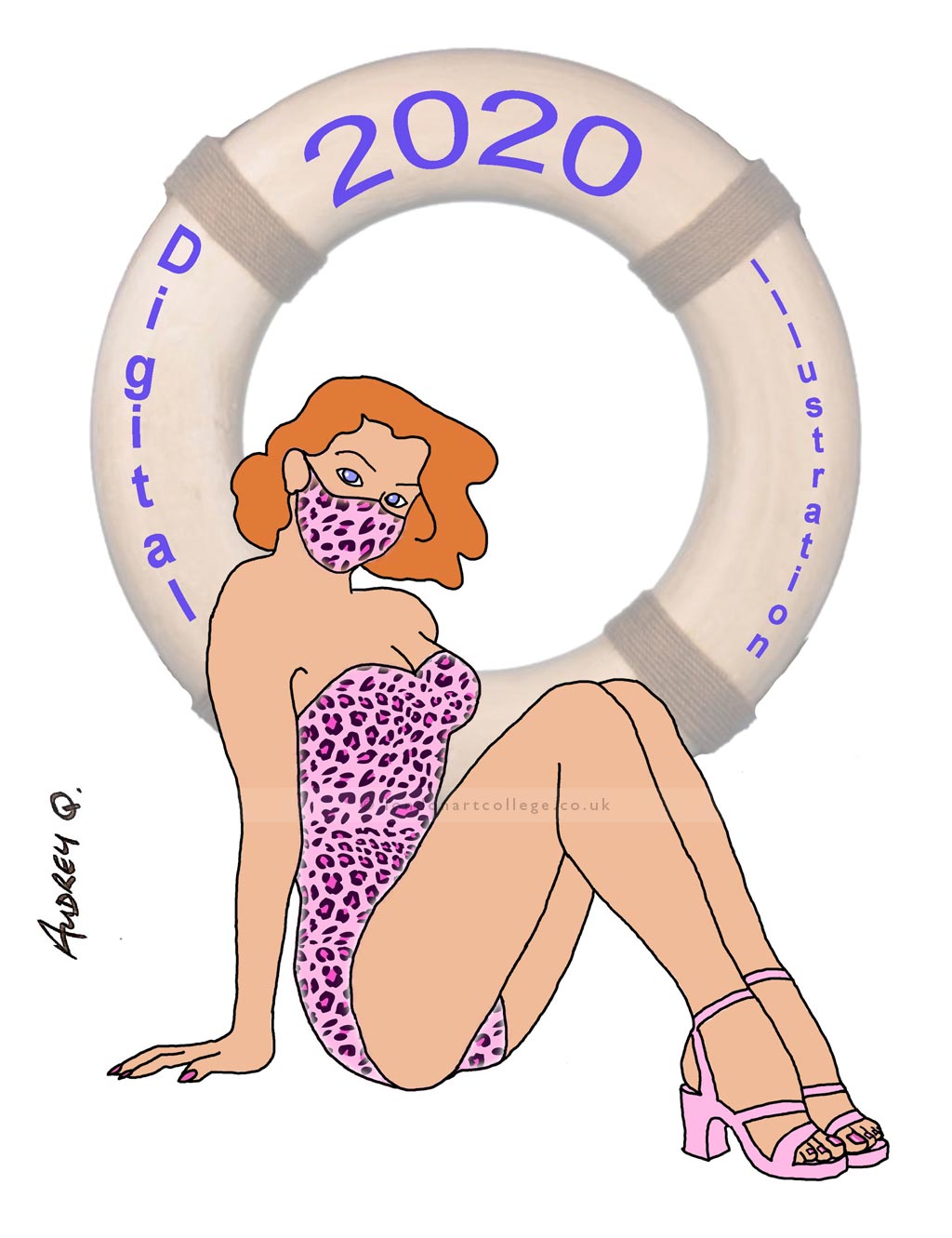
This course can be taken over a two year period and, when I started, I had already decided not to rush things. I wanted to enjoy the journey and take my time along the way. Back then we couldn’t have foreseen Covid and the changes it would bring to our world. I certainly found that I had plenty of free time during lock-down to practice my digital skills. This is, of course, one of the great advantages of a correspondence course – it is hugely flexible.

I am now about 18 months into the two year course and I would love to be able to say that I am totally confident with my digital skills – nope! But I am still learning and things are definitely clicking into place. I haven’t quite turned into a computer nerd but I certainly feel that I can now swear fluently in Klingon. Most of my frustration has been directed at GIMP – the free image manipulation program (progenitor of Photoshop) that is used for the major part of the course. It puts a vast – and I mean vast – art studio’s worth of equipment at my finger tips but, as I have discovered, learning to use all these exciting new tools takes time – but the course materials and the wonderful tutor are always there to give guidance and support.
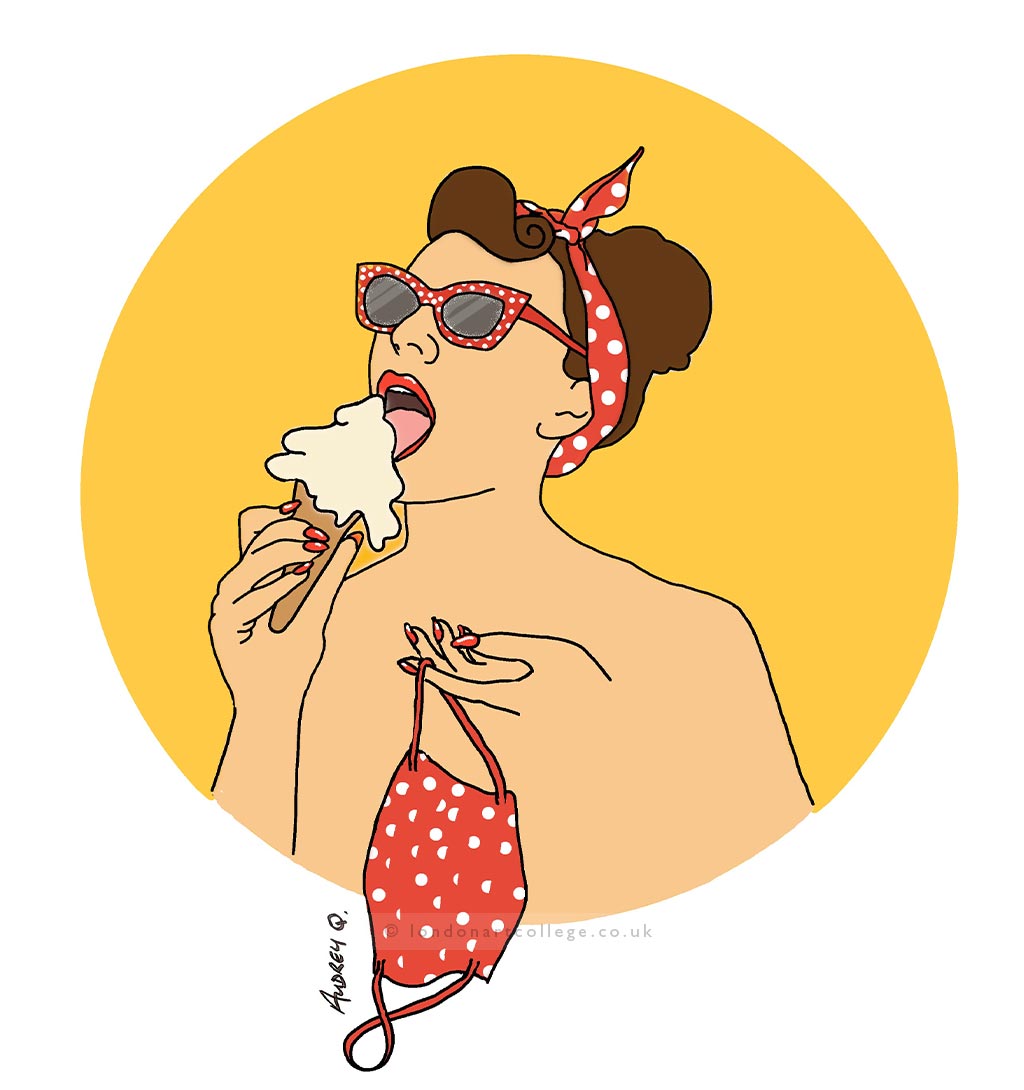
At the time of writing this I am on the final assignment of the bit-map part of the course – Assignment 5. I have covered the use of a wide number of selection and painting tools and have been very excited by the way colour can be used. This has encouraged me to adopt, for the moment, a ‘hard edge’ style of art…
Now, I know that this particular course is not meant to be about developing personal styles of art but, in my case, it certainly did. I can now look back and see the route I have been taking over the last eighteen months and realise that my first forays into digital art took me via the art movements of the 60s – the work of artists such as Roy Lichtenstein and Patrick Caulfield. I began using areas of flat colour and hard black outlines to make nostalgic-style illustrations that were reminiscent of the 40s but were adorned by the very contemporary face mask! I got as much fun from this change in the direction of my work as in learning the many new things that I could do with my Wacom and GIMP.
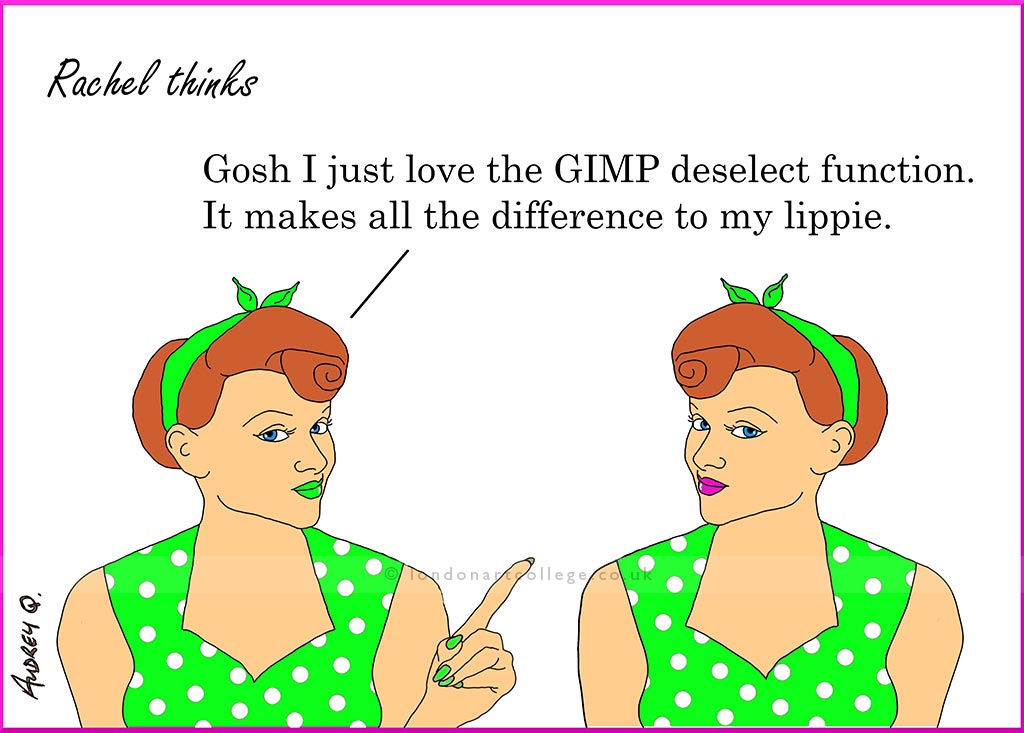
At this stage in the course I would say that the big breakthrough was when I began checking my work from a different perspective – making certain, in the words of Monique that it is ‘crispy’. When using traditional media such as watercolours or oils, I am used to stepping back to see how things are going. I have now trained myself to do the reverse – noticing any mistakes by zooming in to look at what’s going on at the pixel level. My maxim now is: ‘Don’t step back – step inwards!’
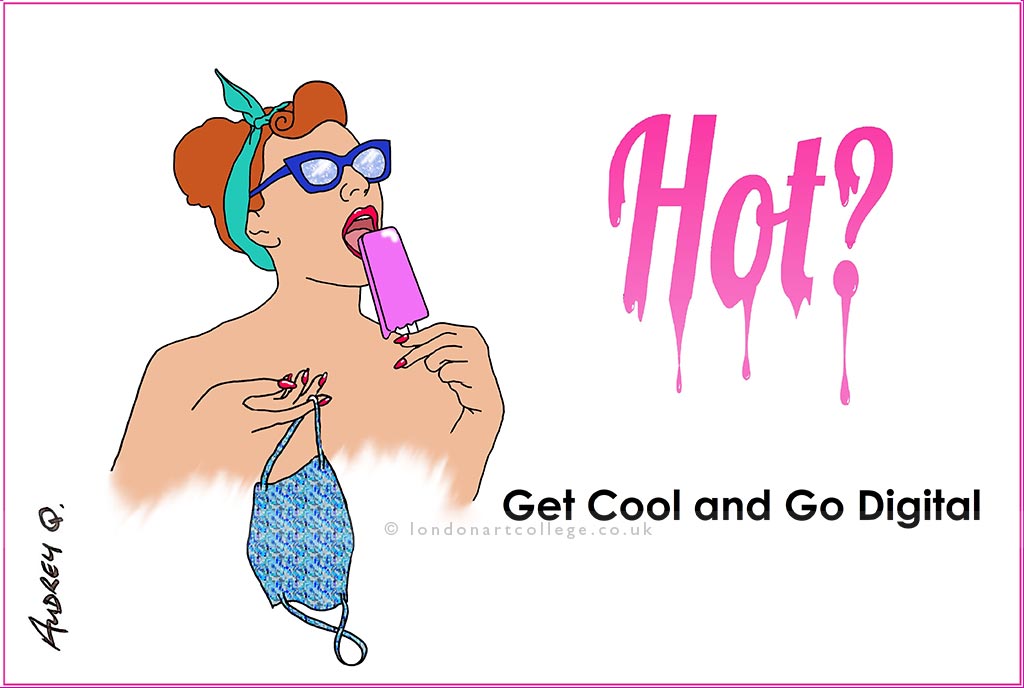
If you would like to receive a roundup of all of our blog posts once a week to keep you inspired in your inbox, why not sign up to our newsletter. You can access our sign up at the top of our page. If you are a London Art College student and you would like your artwork featured here, drop us a line at any time.

